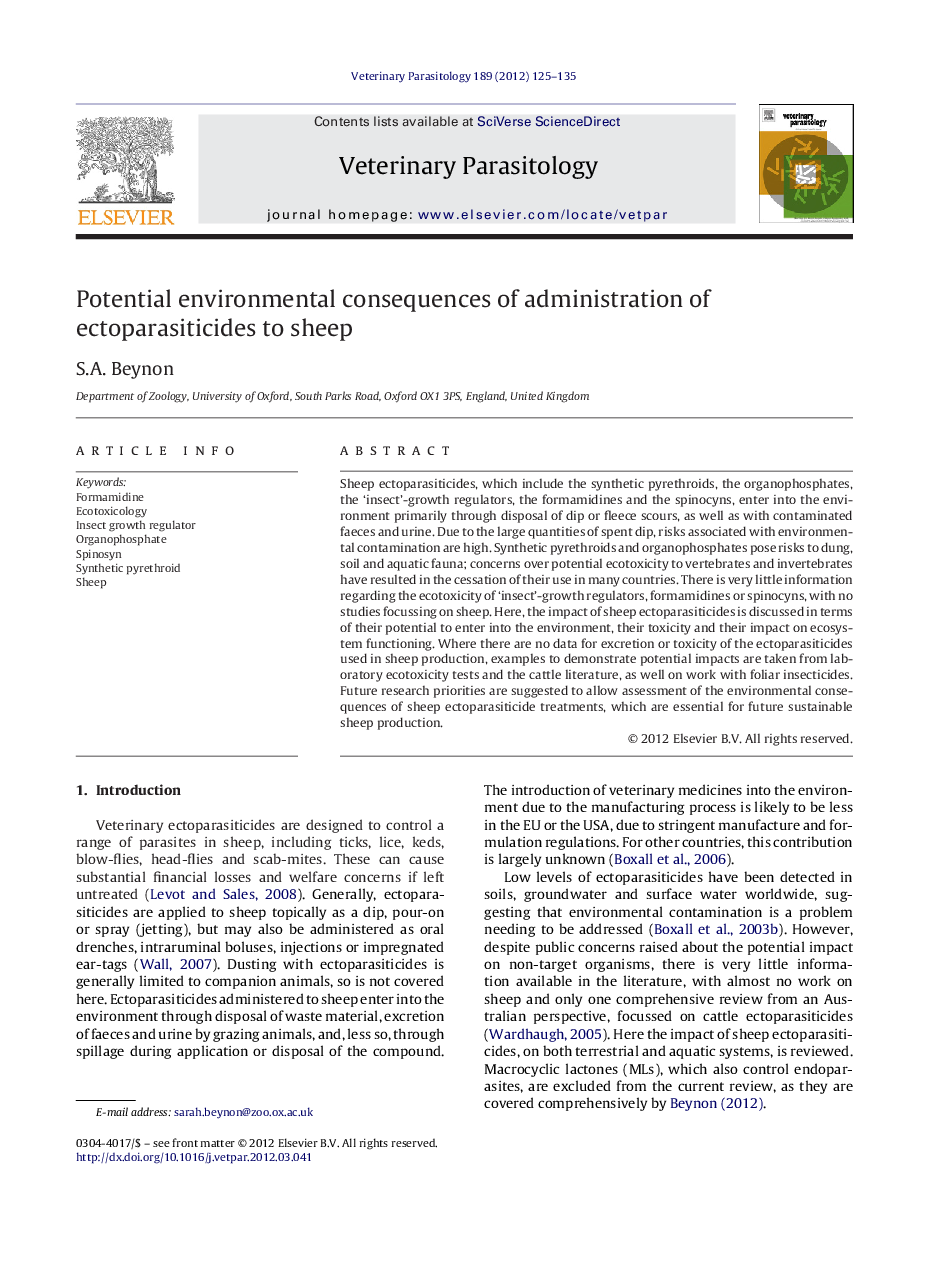| Article ID | Journal | Published Year | Pages | File Type |
|---|---|---|---|---|
| 2470185 | Veterinary Parasitology | 2012 | 11 Pages |
Sheep ectoparasiticides, which include the synthetic pyrethroids, the organophosphates, the ‘insect’-growth regulators, the formamidines and the spinocyns, enter into the environment primarily through disposal of dip or fleece scours, as well as with contaminated faeces and urine. Due to the large quantities of spent dip, risks associated with environmental contamination are high. Synthetic pyrethroids and organophosphates pose risks to dung, soil and aquatic fauna; concerns over potential ecotoxicity to vertebrates and invertebrates have resulted in the cessation of their use in many countries. There is very little information regarding the ecotoxicity of ‘insect’-growth regulators, formamidines or spinocyns, with no studies focussing on sheep. Here, the impact of sheep ectoparasiticides is discussed in terms of their potential to enter into the environment, their toxicity and their impact on ecosystem functioning. Where there are no data for excretion or toxicity of the ectoparasiticides used in sheep production, examples to demonstrate potential impacts are taken from laboratory ecotoxicity tests and the cattle literature, as well on work with foliar insecticides. Future research priorities are suggested to allow assessment of the environmental consequences of sheep ectoparasiticide treatments, which are essential for future sustainable sheep production.
